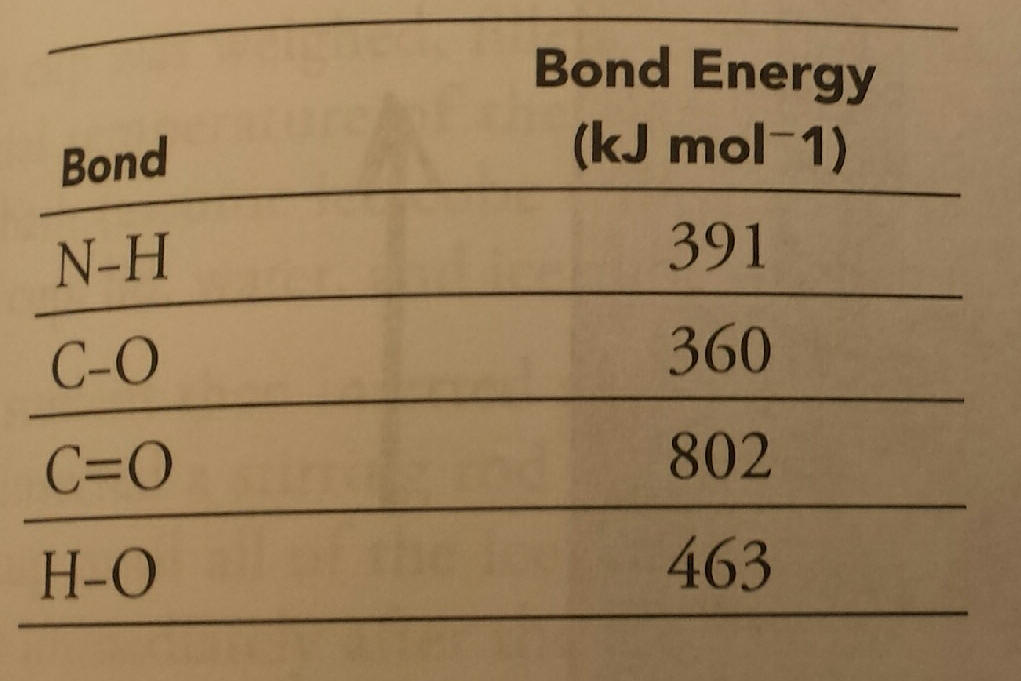
Journal Entry:

Using the bond energies provided in the table below, (a) calculate the enthalpy change of this reaction, and (b) state whether this reaction is endothermic or exothermic. Support your answer with data and calculations.

Learning Intentions
We will learn how bond enthalpies can be used to calculate enthalpy of a reaction.
We will learn how to calculate enthalpy of heating or cooling processes and what constants to use in different stages of the process.
We will learn how to determine enthalpy of a reaction using Hess's Law and Heats of Formation.
We will learn that when a reaction is reversed, the sign of the enthalpy of reactions is changed, and when two or more reactions are summed to obtain an overall reaction, the enthalpies of reactions are summed to obtain the net enthalpy of reaction.
Closing Task:
You can determine enthalpy of reaction using Hess's Law and Heats of Formation.
Content Standards being covered:
Chemical system undergo three main processes that change their energy: heating/cooling, phase transitions, and chemical reactions. (E.K. 5.B.3.)
At the particulate scale, chemical processes can be distinguished from physical processes because chemical bonds can be distinguished from intermolecular interactions. (E.K. 5.D.2)
The net energy change during a reaction is the sum of the energy required to break bonds in the reactant molecules and the energy release in forming the bonds of the product molecules. The net change in energy may be positive for endothermic reactions where energy is required, or negative for exothermic reactions where energy is released. (E.K. 5.C.2)